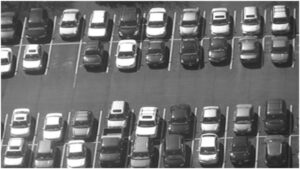Table of Contents
INTRODUCTION
The problem of car parking is increasing day by day. More and more people are investing in cars, so parking probably remains the most critical problem among them. Because of the absence of rules regarding parking spot issues in India, individuals alone are not at fault for their lack of traffic information. This article covers all the Parking Rules and regulations in India that you all need to know about.
According to section 15, Rules of the Road Regulation – 1989
Every driver of a motor vehicle parking on any road shall park in such a way that it does not cause or is not likely to cause danger, obstruction, or undue inconvenience to other road users and if the manner of parking is indicated by any sign board or markings on the roadside, he shall park his vehicle in such manner.

A motor vehicle cannot be legally parked
- At or near a road crossing, a bend, the top of a hill, or a humpbacked bridge
- On a footpath
- Near a traffic light or pedestrian crossing
- On the main road or one carrying fast traffic
- Opposite another parked vehicle or as an obstruction
- Alongside another parked vehicle
- On roads or at places or roads where there is a continuous white line with or without a broken line
- Near a bus stop, school, or hospital entrance or blocking a traffic sign or entrance to a premise
- On the wrong side of the road
- Where parking is prohibited
- Away from the edge of the footpath
According to section 122 of the Motor Vehicles Act, 1988
Do not leave your vehicle in a dangerous position
No person in charge of a motor vehicle shall cause or allow the vehicle or any trailer to be abandoned or to remain at rest in any public place in such a position or in such a condition or in such circumstances as to cause or likely to cause danger, obstruction or undue inconvenience to other users of the public place or to the passengers.
According to section 127 of the Motor Vehicles Act, 1988
Rules for removal of abandoned or unattended motor vehicles in a public place
- Any motor vehicle abandoned or left unattended in a public place for ten hours or more or one parked in a place where parking is legally prohibited, its removal by a towing service or its immobilization by any means including wheel clamping may be authorized by a police officer in uniform having jurisdiction.
- An abandoned, unattended, wrecked, burnt, or partially dismantled vehicle creates a traffic hazard because of its position in relation to the public place or its physical appearance is causing an impediment to the traffic, its immediate removal by a towing serving may be authorized by a police officer having jurisdiction.
- Where a vehicle is authorized to be removed under sub-section (1) or sub-section (2) by a police officer, the owner of the vehicle shall be responsible.
According to section 201 of the Motor Vehicles Act, 1988
Fines for obstructing the free flow of traffic
- Anyone who keeps a disabled vehicle in any public place in such a manner so as to impede the free flow of traffic shall be liable for a penalty of up to fifty rupees per hour, so long as it remains in that position.
- The vehicle involved in accidents shall be liable for penalty only from the time of completion of inspection formalities under the law.
- For a vehicle removed by a Government agency, towing charges shall be recovered from the vehicle owner or person in charge of such vehicle.
Kinds of Parking
Parallel parking
Parallel Parking implies leaving the vehicle in a line (front to back). The leaving region should be one and half times longer than the vehicle to be gone
Angular Parking
Angular Parking implies leaving the vehicle at a point to the control of the street.
Perpendicular Parking
Perpendicular Parking implies that stop at the right point of the street check. Always reverse the vehicle in the parking spot so you can exit quickly.
Parking Restrictions
- Never park on the road, close to a traffic crossing, turn, or a roundabout.
- Attempt not to leave on the main street or where your vehicle hinders traffic, on the off-base roadside, and where leaving your car is denied
Enforcement of Stricter Rules
To ensure that people are following traffic safety as well as parking rules in India, there is a need for the implementation of stricter rules. However, there is a limit to which the police can enforce the same.
The challenging part is to enforce the current rules effectively by monitoring parking situations. As a matter of fact, the lack of resources and adequate technology makes enforcement weak in most cities in India. Solving these issues entails creating several by-laws.
One aspect that can help us combat parking space issues is to encourage people to use public transport. Authorities also need to take into consideration the growing number of vehicles on Indian roads.
To intervene in this, mechanisms such as hiking parking fees, congestion taxes, and restricting parking in certain areas can also be taken into consideration.
MUST READ
WHAT IS ANCESTRAL PROPERTY IN INDIA? 2022
TAX AVOIDANCE AND TAX EVASION 2022
